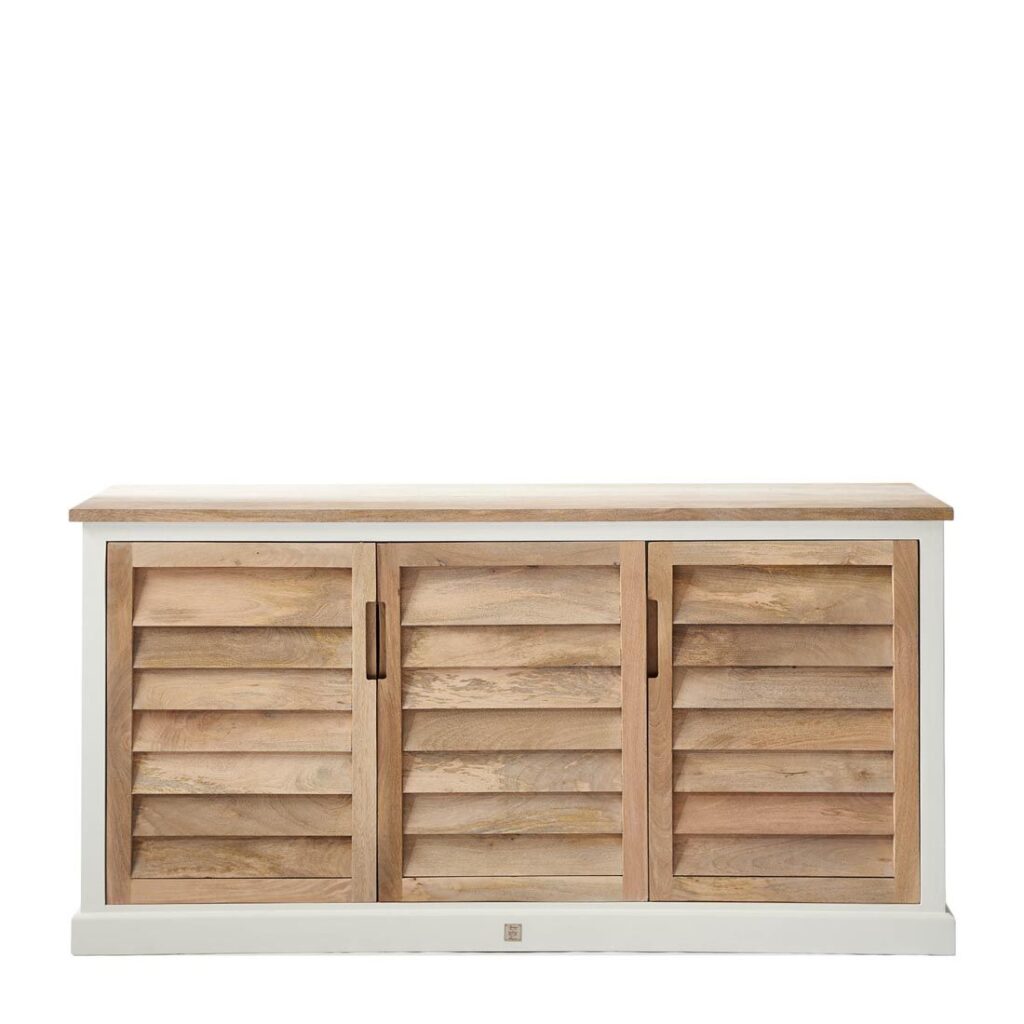In the realm of home furnishings, a sideboard is a versatile and often underrated piece. It’s not just a storage unit; it’s a statement piece that can enhance the aesthetic appeal of any room like this notorious Riviera Maison Sideboard. Whether it’s in your dining room, living room or hallway, a quality sideboard offers both functionality and style. Finding the right sideboard requires careful consideration of several factors. Here’s a comprehensive guide to help you choose a sideboard that’s both beautiful and practical.
1. Assess your storage needs
Start by considering what you need the sideboard for. Do you want to store crockery, linen or other dining essentials? Or do you need it for general storage? The purpose will influence the size and type of sideboard you choose. For example, if you need to store large items, look for a sideboard with plenty of space and sturdy shelves.
2. Measure your space
Before you start shopping, measure the area where you want to place the sideboard. This will help ensure that it fits comfortably into your space without overcrowding it. Remember to include the height, width and depth. Also think about the flow of the room; there should be enough space to move the sideboard around easily.
3. Quality of the material
The material of the sideboard plays a crucial role in both its appearance and durability. Common materials include wood, metal, glass and even high quality MDF. Solid wood sideboards are durable and can offer a classic or rustic look. Metal and glass sideboards tend to have a more contemporary look. Choose a material that suits not only your style, but also your intended use and the environment of the room.
4. Design and style
The style of the sideboard should complement the overall decor of your home. Whether you prefer a contemporary, traditional or eclectic look, the sideboard should blend seamlessly with your existing furnishings. Pay attention to design details such as handles, legs and finishes as these can have a significant impact on the overall aesthetic.
5. Functionality and features
Think about the functionality of the sideboard. Does it have adjustable shelves, soft-closing doors or drawers? Features like these can increase the usability of the sideboard. If you plan to use it as a serving station in the dining room, look for features such as a wine rack or a flat top for serving food.
6. Craftsmanship and durability
A quality sideboard should be well constructed with attention to detail. Check the joints, hinges and drawer mechanisms; they should be strong and easy to operate. A well-made sideboard will not only look good, it will stand the test of time.
7. Colour and finish
The colour and finish of the sideboard can have a significant impact on the ambience of your room. Do you want it to stand out as an accent piece or blend in with the rest of your furniture? Consider how the colour will work with the lighting and other colour schemes in your room.
8. Brand reputation and customer reviews
Research brands and read customer reviews. This can give you an insight into the quality and durability of their furniture, as well as their customer service and delivery processes.
9. Budget considerations
Set a realistic budget for your sideboard. While you may not want to skimp on quality, there are options available at different price points. Remember that a higher price doesn’t always mean better quality, so shop around and compare.
10. Environmental impact
If sustainability is important to you, look for sideboards made from eco-friendly materials or from brands with sustainable practices. This could include the use of reclaimed wood or environmentally friendly production processes.
In conclusion, a sideboard is not just a functional piece of furniture, but an important investment in the aesthetics and practicality of your home. By considering these factors, you can find a sideboard that meets your storage needs, complements your home décor and serves as a beautiful, lasting addition to your space.







